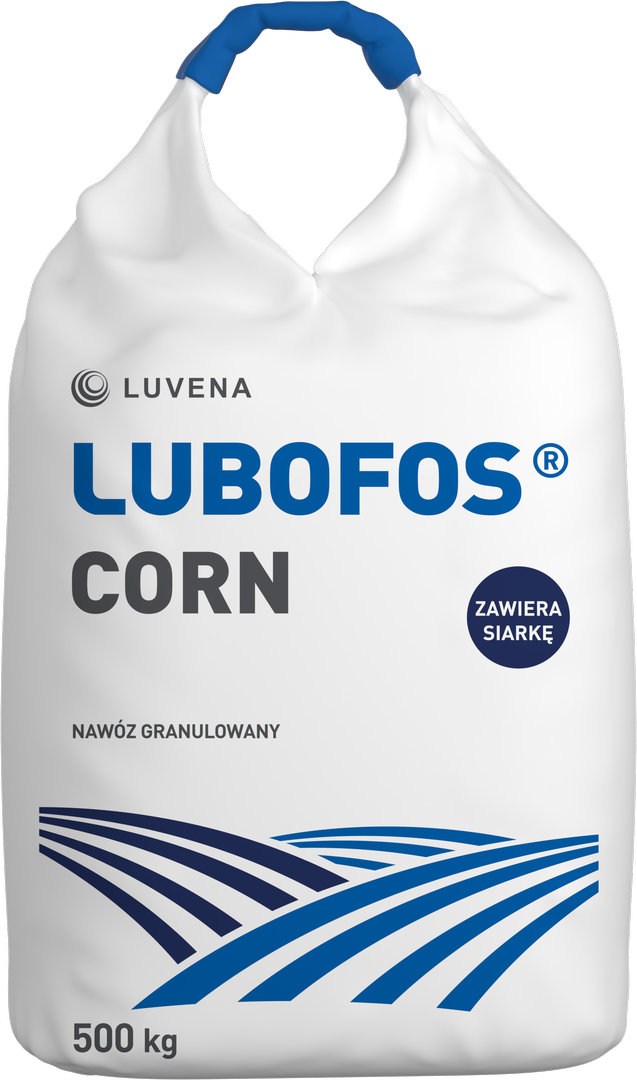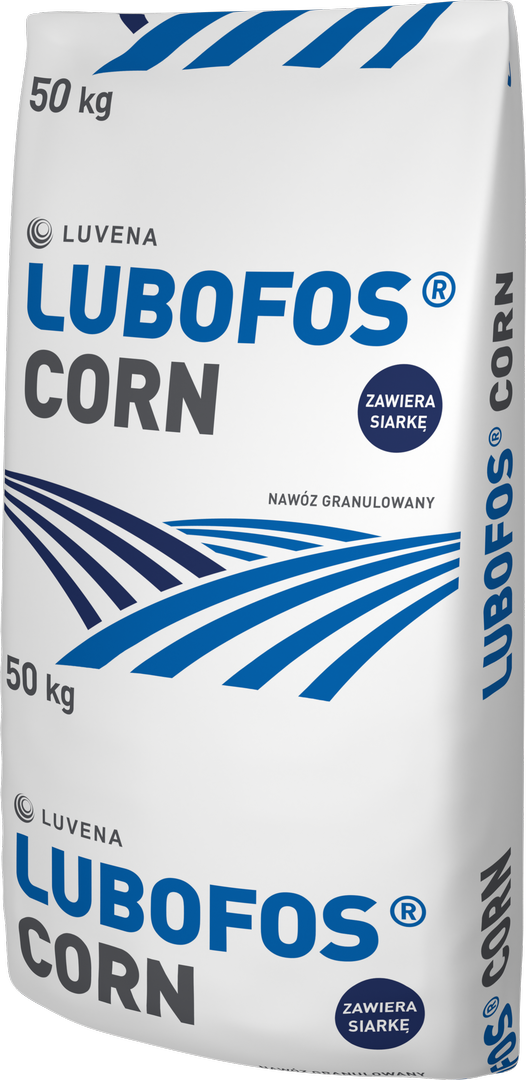

LUBOFOS ® CORN
EU FERTILISING PRODUCT ● GRANULATED ● COMPLEX MACRONUTRIENT FERTILISER
NPK (Ca, S) 5-10-21-(15-19) WITH BORON (B) 0.09 AND ZINC (Zn) 0.20
- particularly recommended for corn
- ensures high yields of grain, CCM, silage and green fodder
- meets the specific demand of corn for phosphorus and zinc – the nutrients critical to high yield
- improves the efficiency of nitrogen fertilisation
- also recommended for growing peas, onions and flax
- due to the content of zinc and boron, it is also recommended for fruit and vegetables
- very good spreading properties
CHARACTERISTIC CARD arrow_forward
CERTIFICATE OF CONFORMITY arrow_forward
TECHNICAL SPECIFICATIONS arrow_forward

